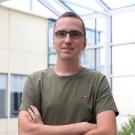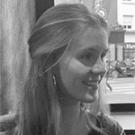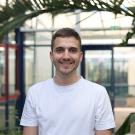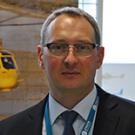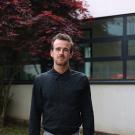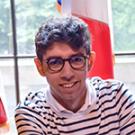
Each year, the Fatigue Committee gives the Jacques Pomey Award to a young scientist under 32 years of age for a particularly outstanding paper presented during the "Journées du Printemps” (Spring Days).
Organized by the SF2M (French Society for Metallurgy and Materials), the theme of the 38th Journées du Printemps was: Fatigue and Additive Manufacturing.
What is your study background ?
After studying in the MPSI-PSI classes preparing for grande écoles entrance, I enrolled in the Institut français de Mécanique avancée (now Sigma Clermont) where I chose the Structures and Materials specialization.
After a one-year stint at Naval Group in Lorient as a mechanical engineer in the composites division, I joined ENSTA Bretagne to complete my PhD on the "Fatigue strength of hollow parts obtained by additive manufacturing."
Can you tell us about the subject for which you received the Jacques Pomey award ?
During the SF2M Journées du Printemps I presented an overview of my PhD work, which focused on the fatigue characterization of materials and structures obtained by the WAAM (Wire and Arc Additive Manufacturing) process.
The WAAM process is an additive manufacturing technique that involves producing a geometry by stacking layers of material, with each layer formed by laying welding seams side-by-side.
This subject was part of a project funded by the French Government Defense Procurement and Technology Agency (DGA) and in cooperation with Naval Group.
Additive manufacturing is a relatively new production process in the industry. In this context, my work has focused on implementing a fatigue design method for structures made through the WAAM process, reflecting the specificities of additive manufacturing materials, including the presence of internal defects and the existence of a high surface roughness. The target application was the making of marine propeller blades for the naval industry. This work is part of the European RAMSSES project, which aims to reduce the environmental footprint of civil naval structures.
What are your professional goals ?
I am now pursuing my post-doctorate at ENSTA Bretagne on the use of an experimental method for in-situ fatigue crack detection through infrared thermography. This method is in particular applied for the characterization of the fatigue behavior of naval welded joints. This is an experimental technique that I already explored during my PhD. This post-doctorate is part of the ANR Self-Heating industrial chair.
Obtaining this award is therefore particularly encouraging for the continuing of work on subjects related to my PhD. Later, I would like to pursue my professional career in the academic world as a lecturer.
Intervention de Lorenzo Bercelli à 1'20








